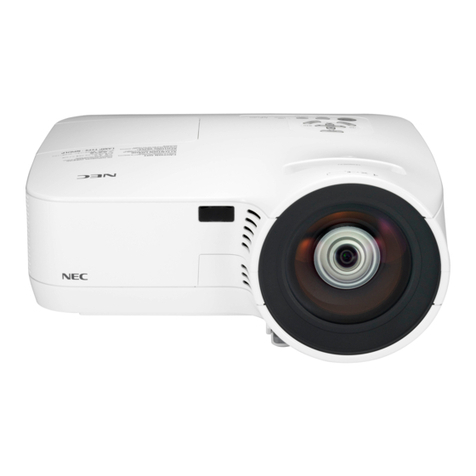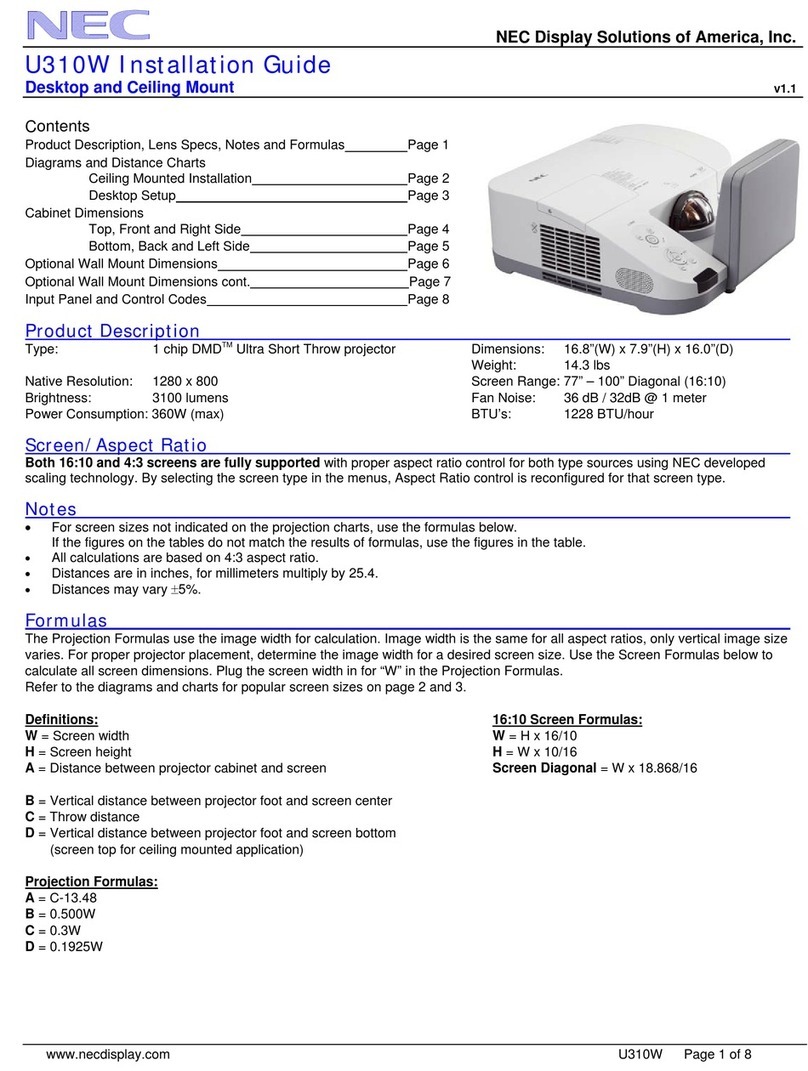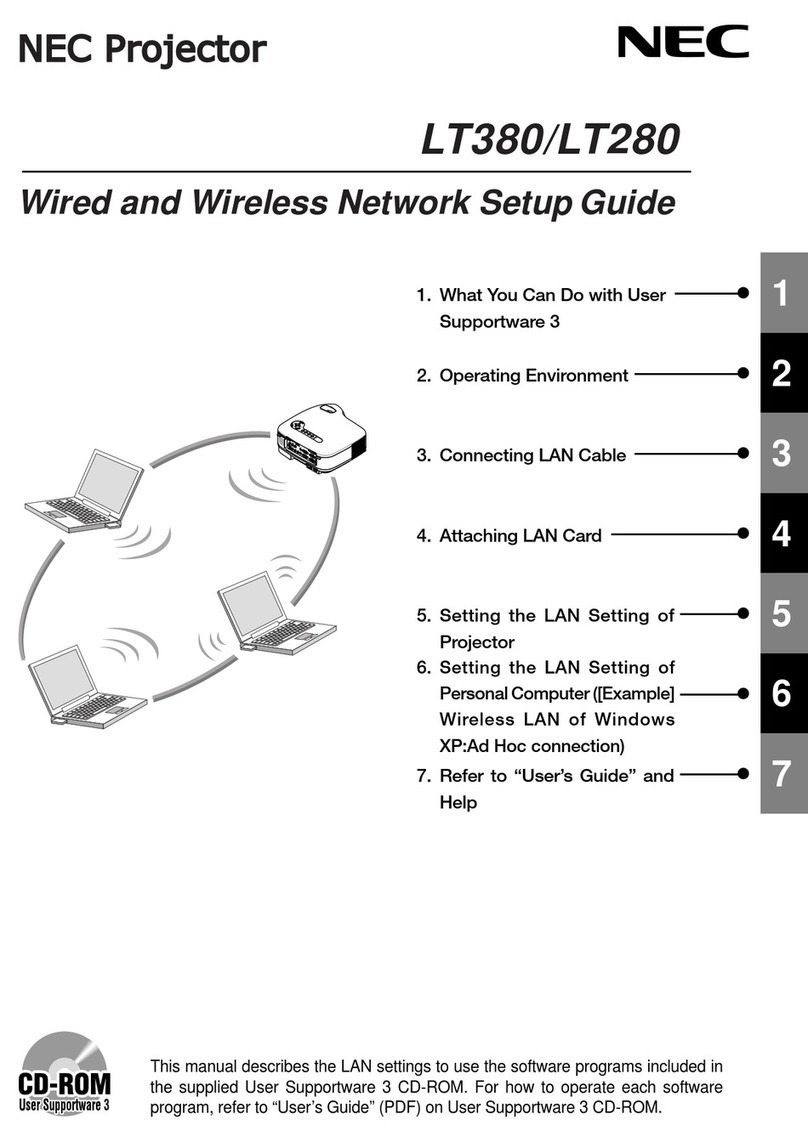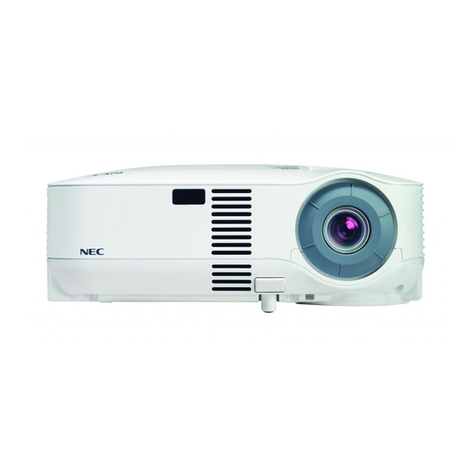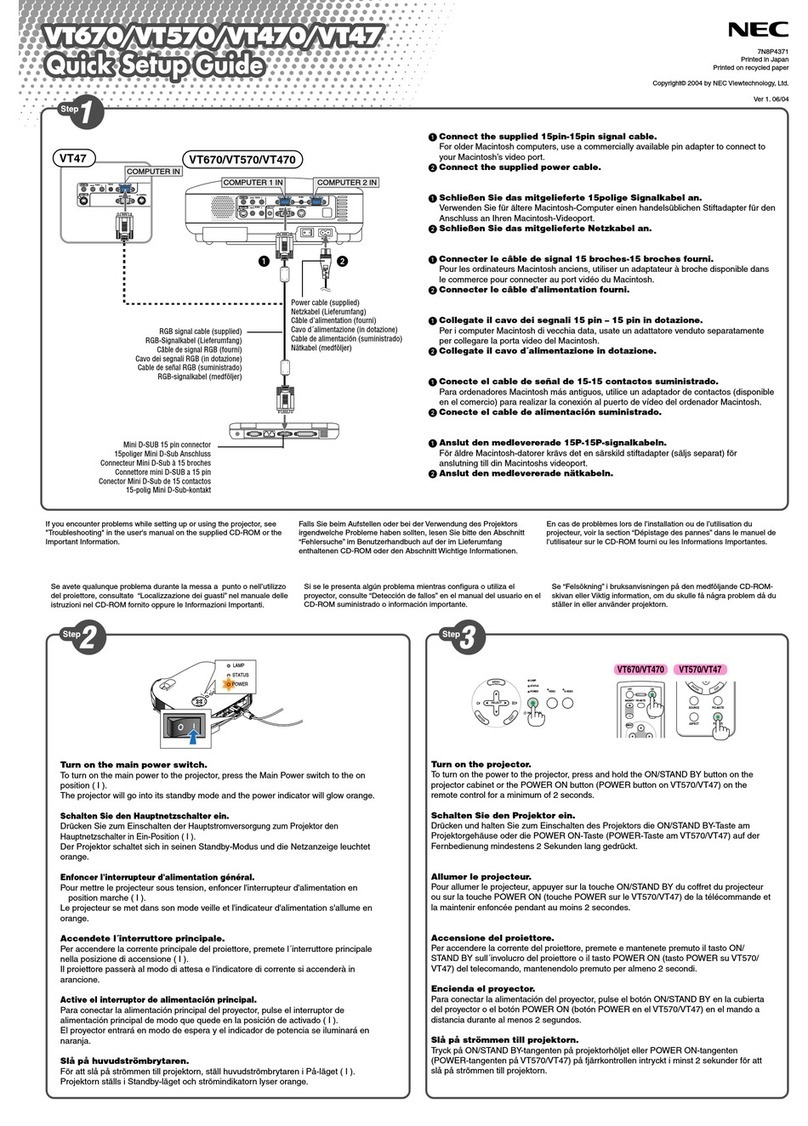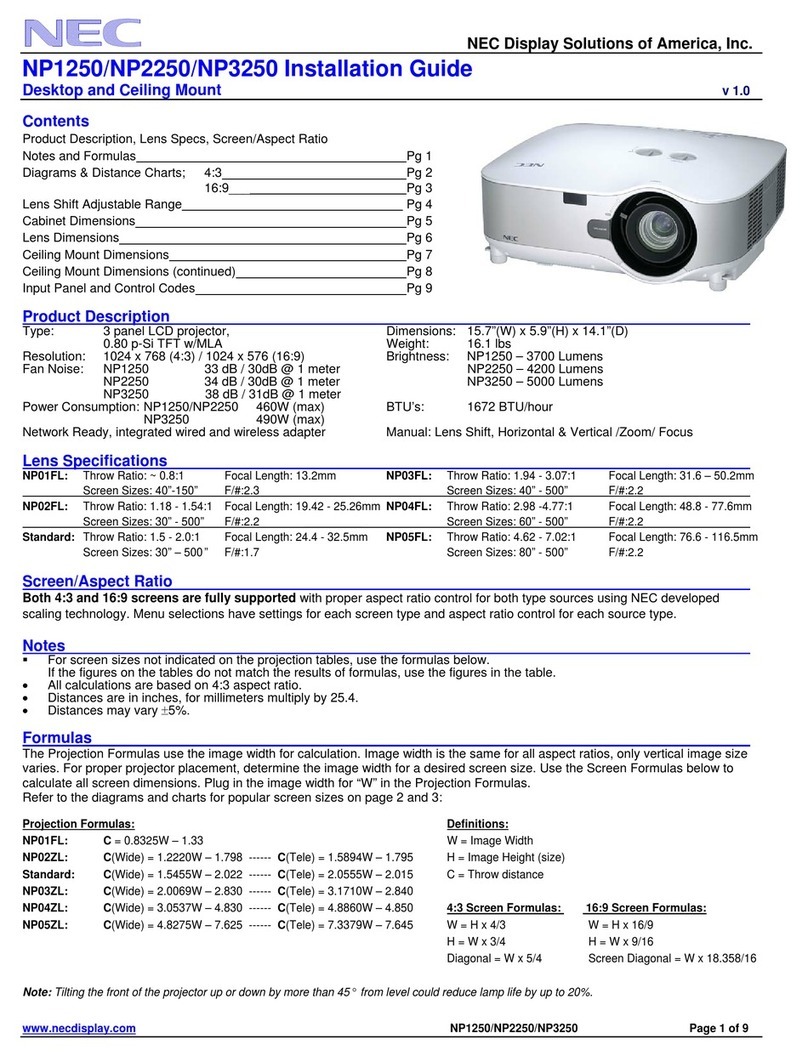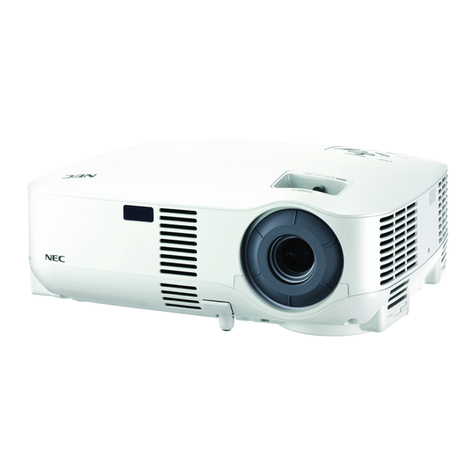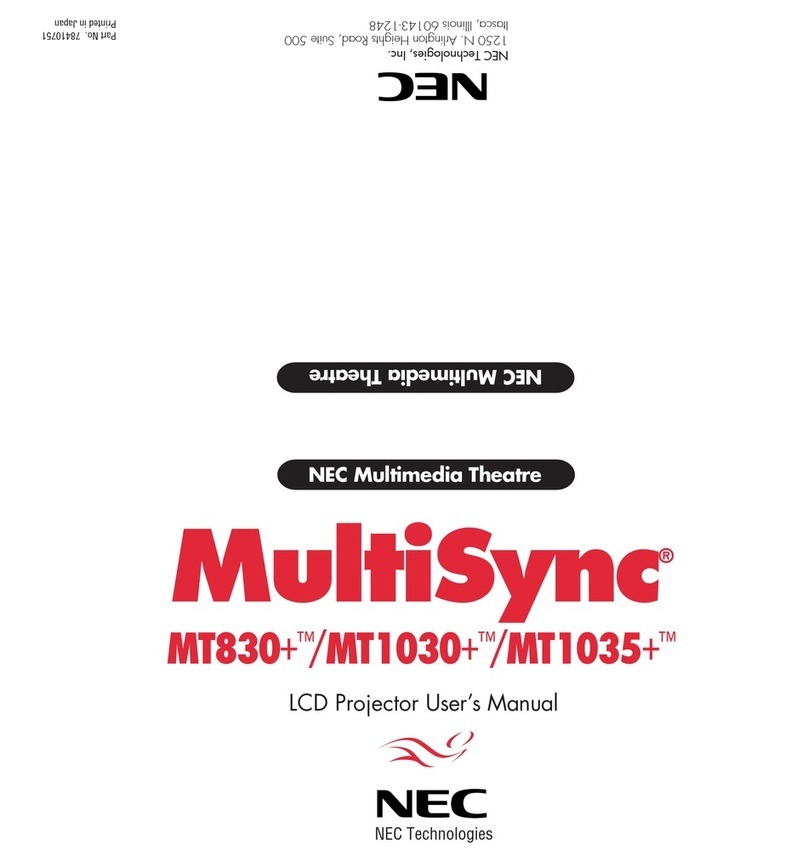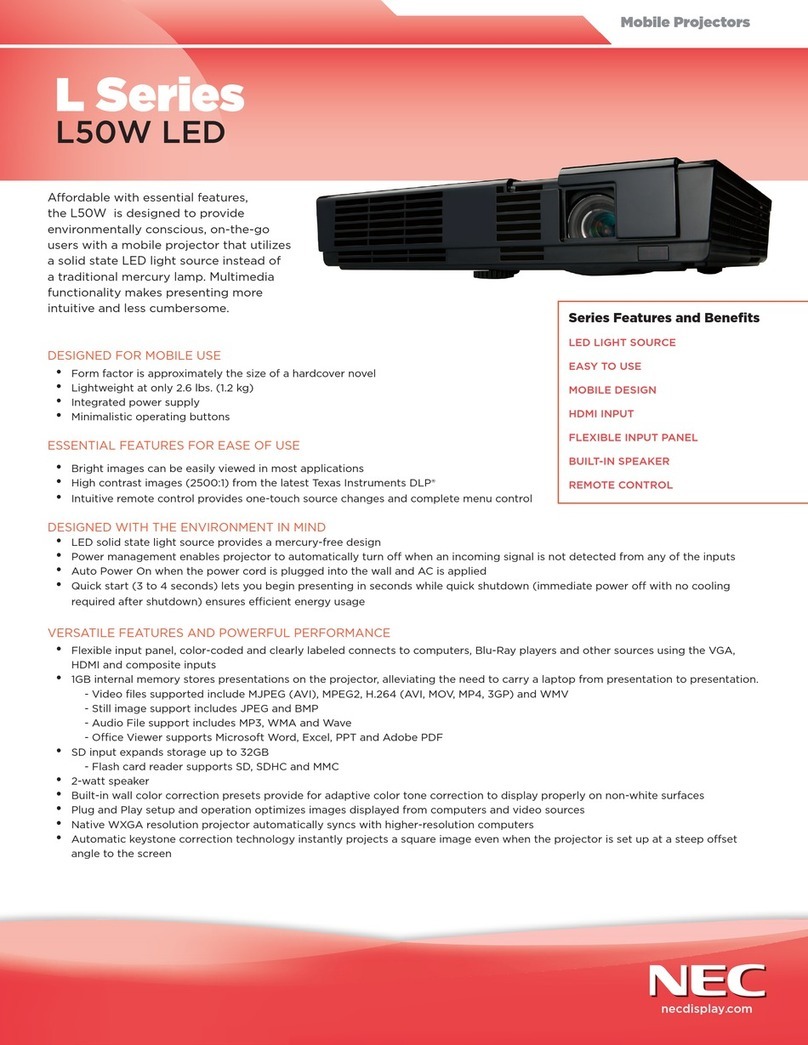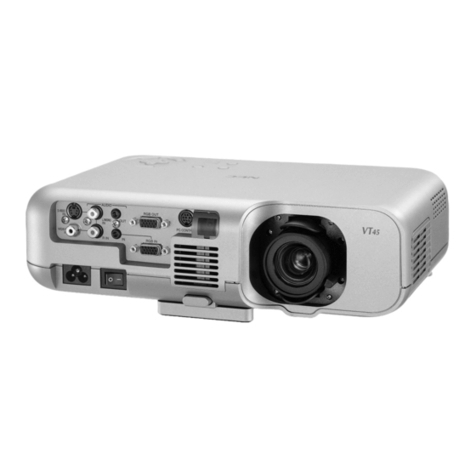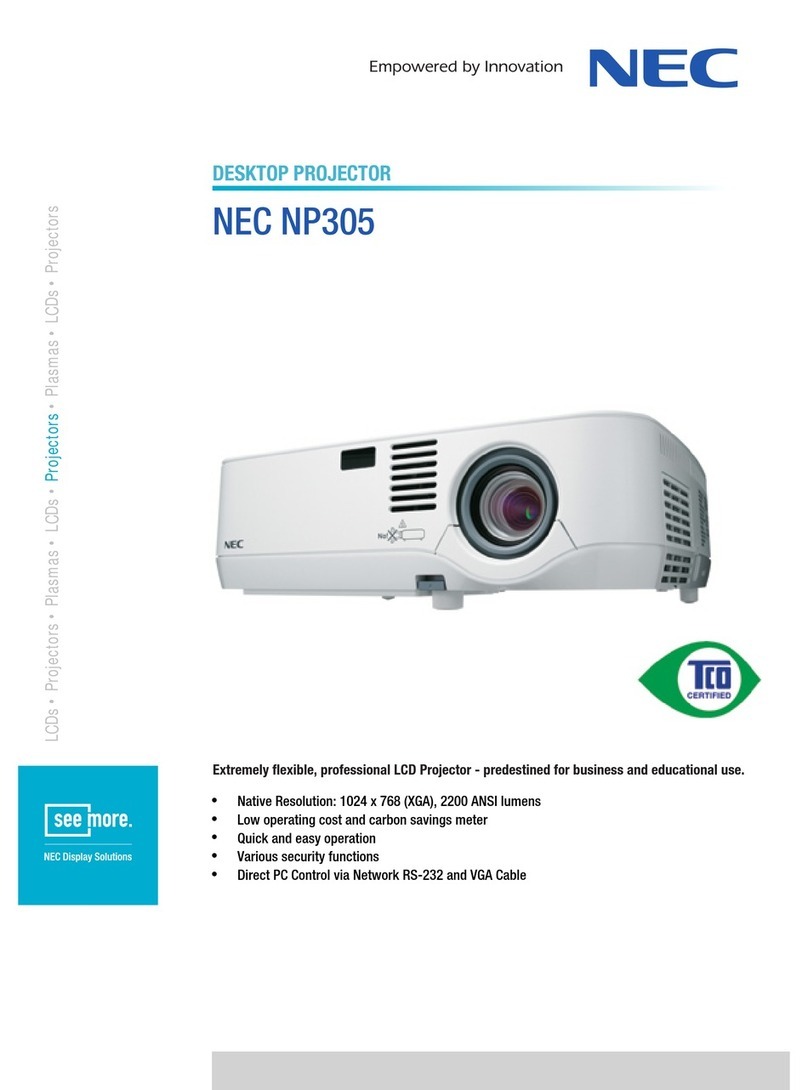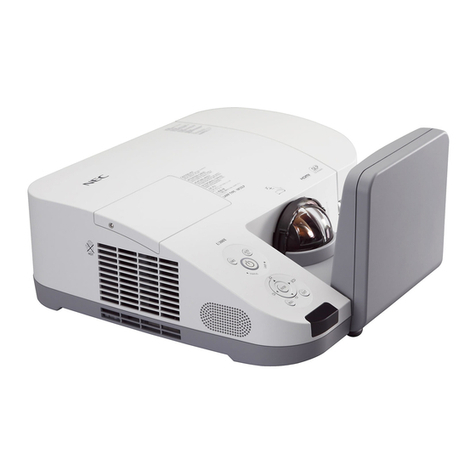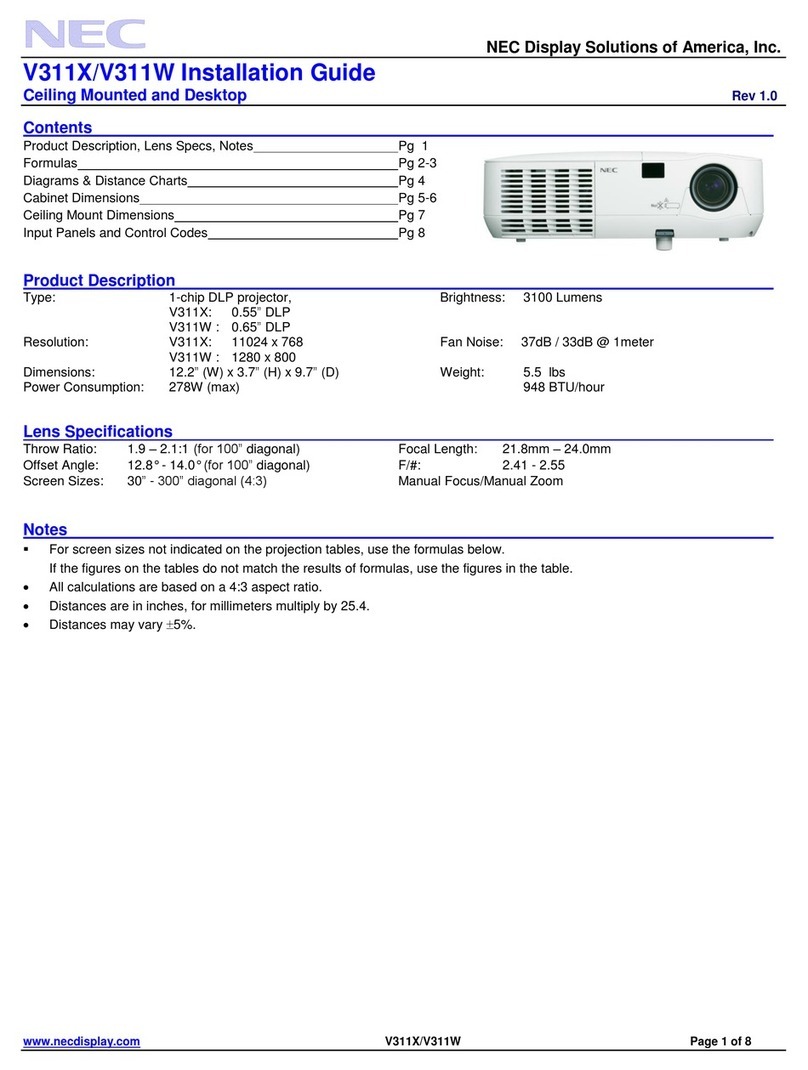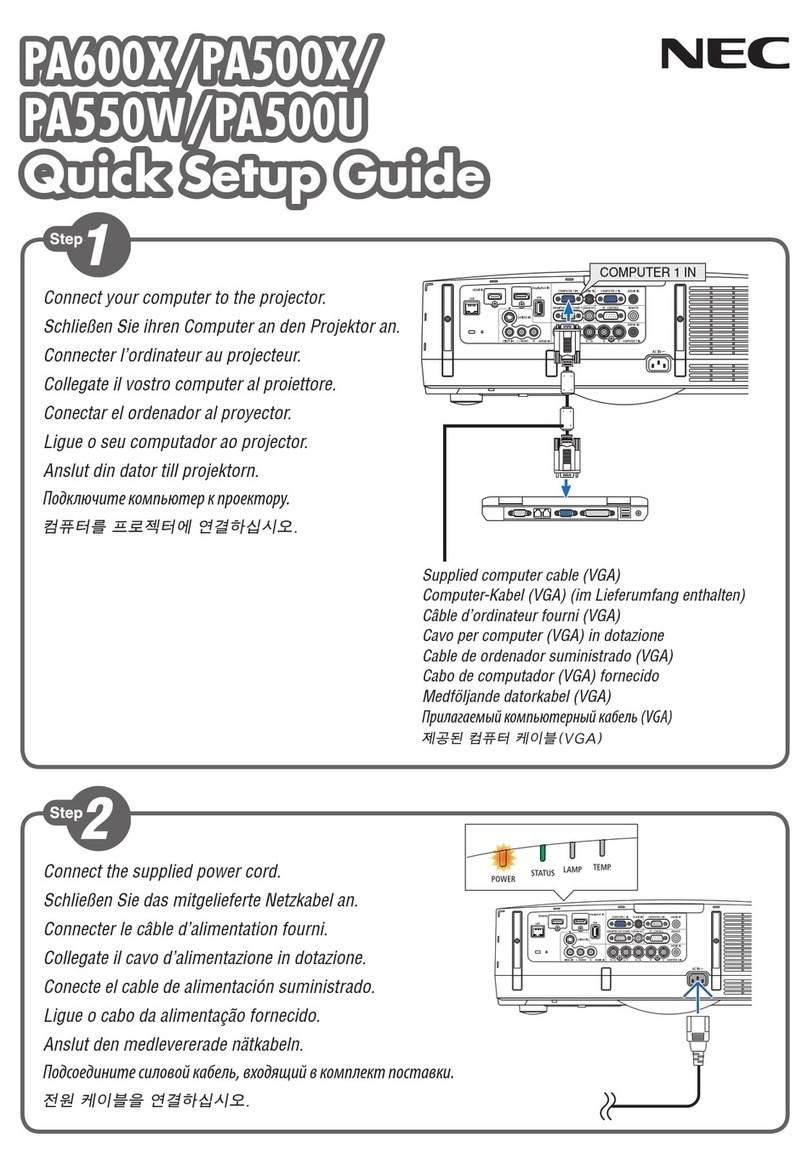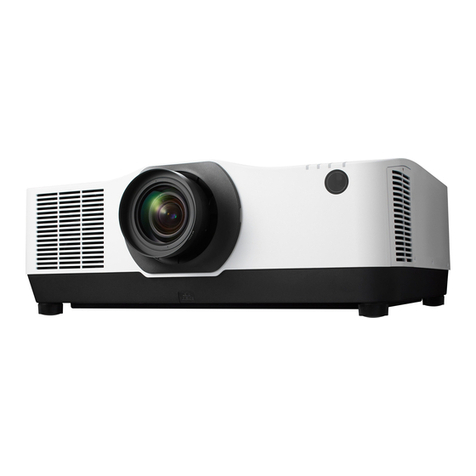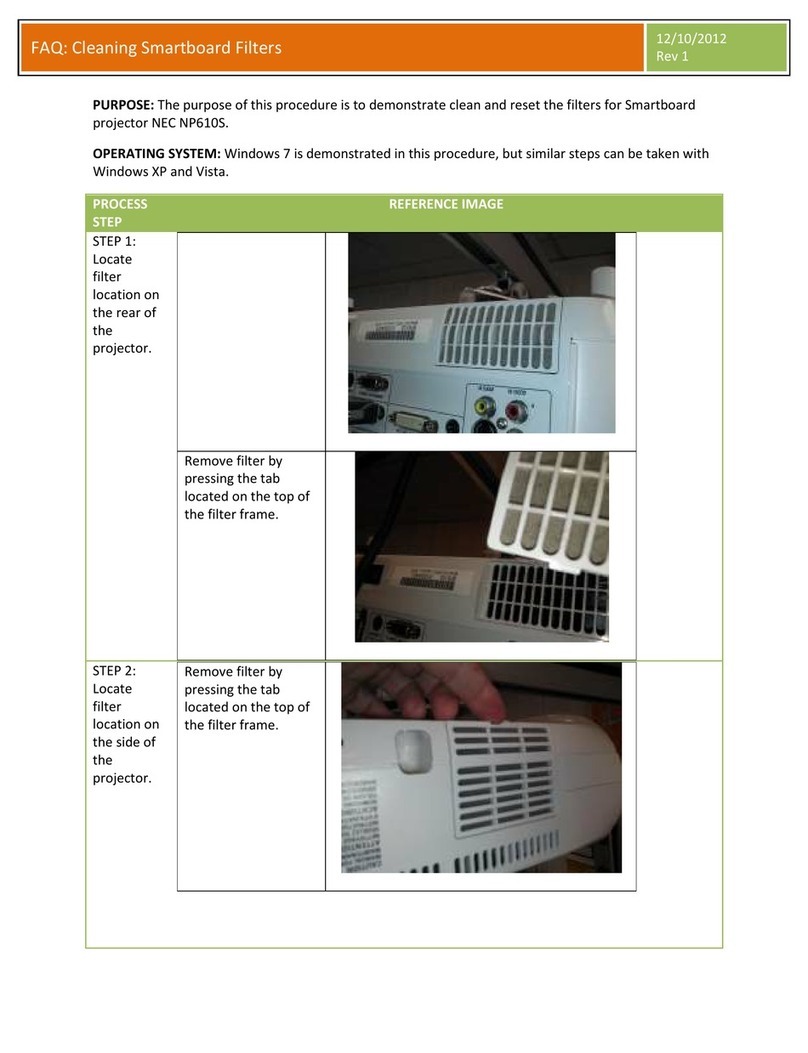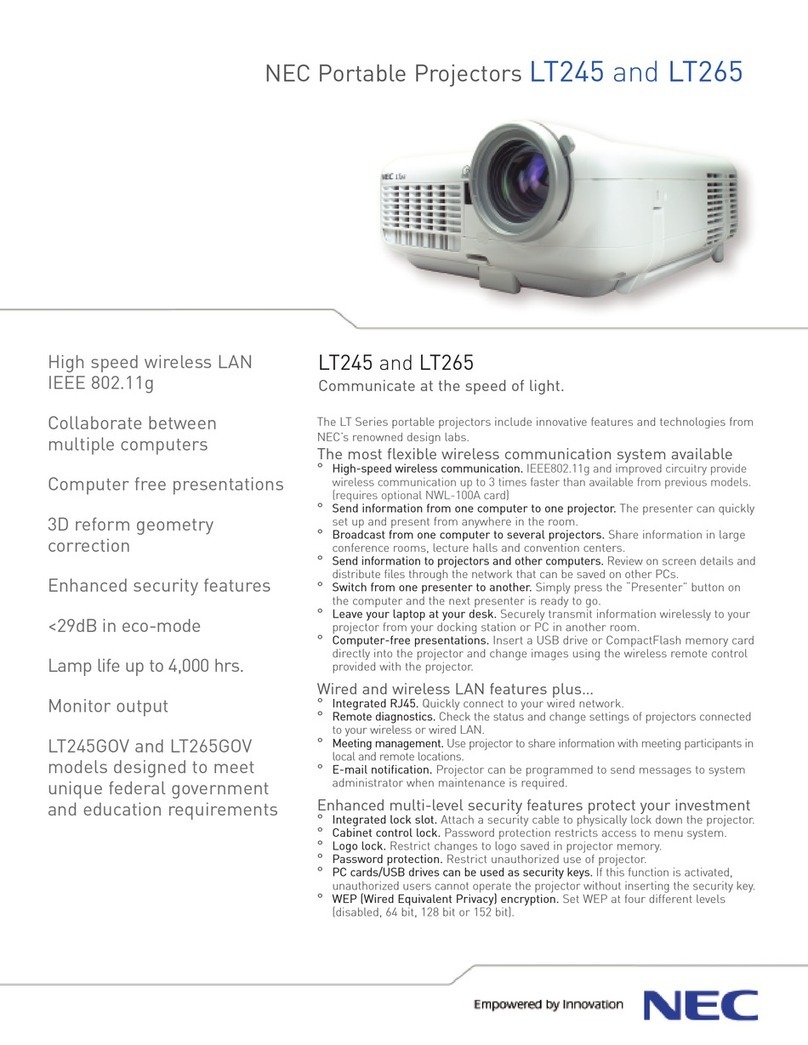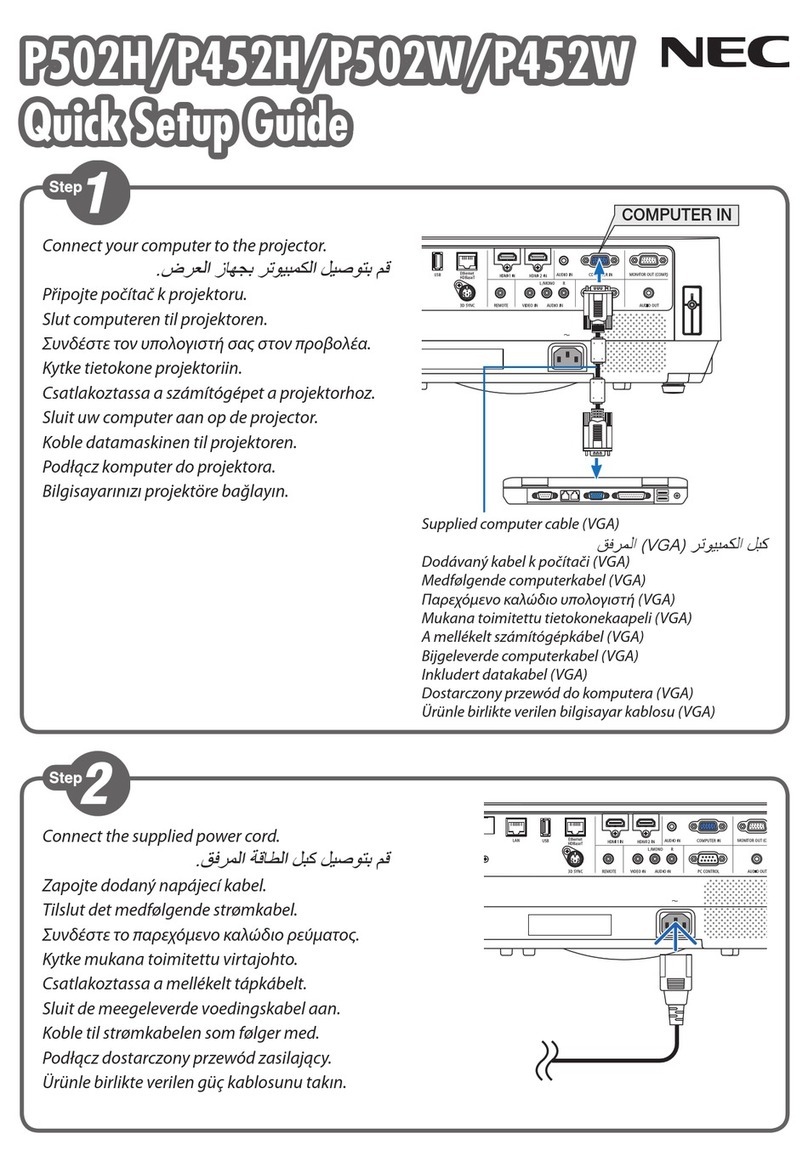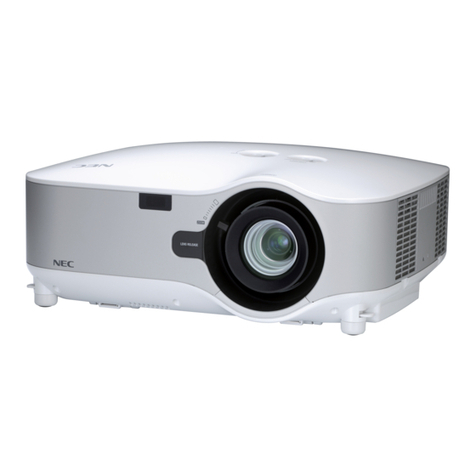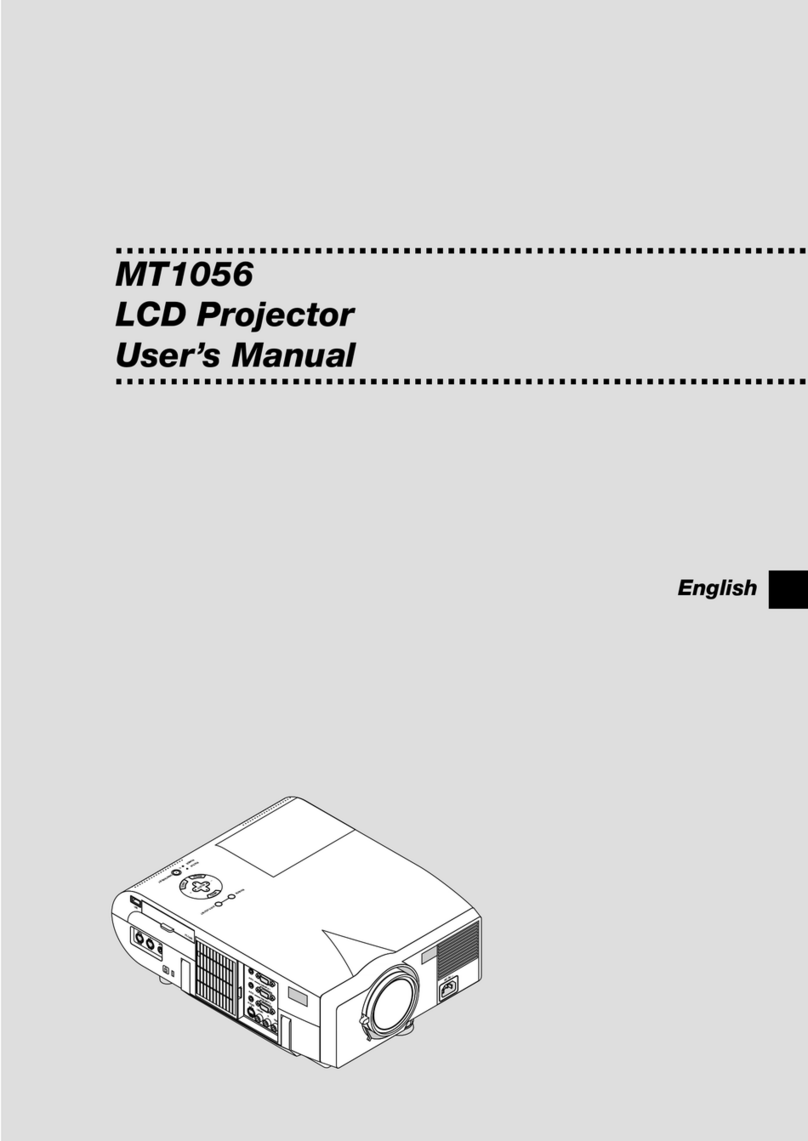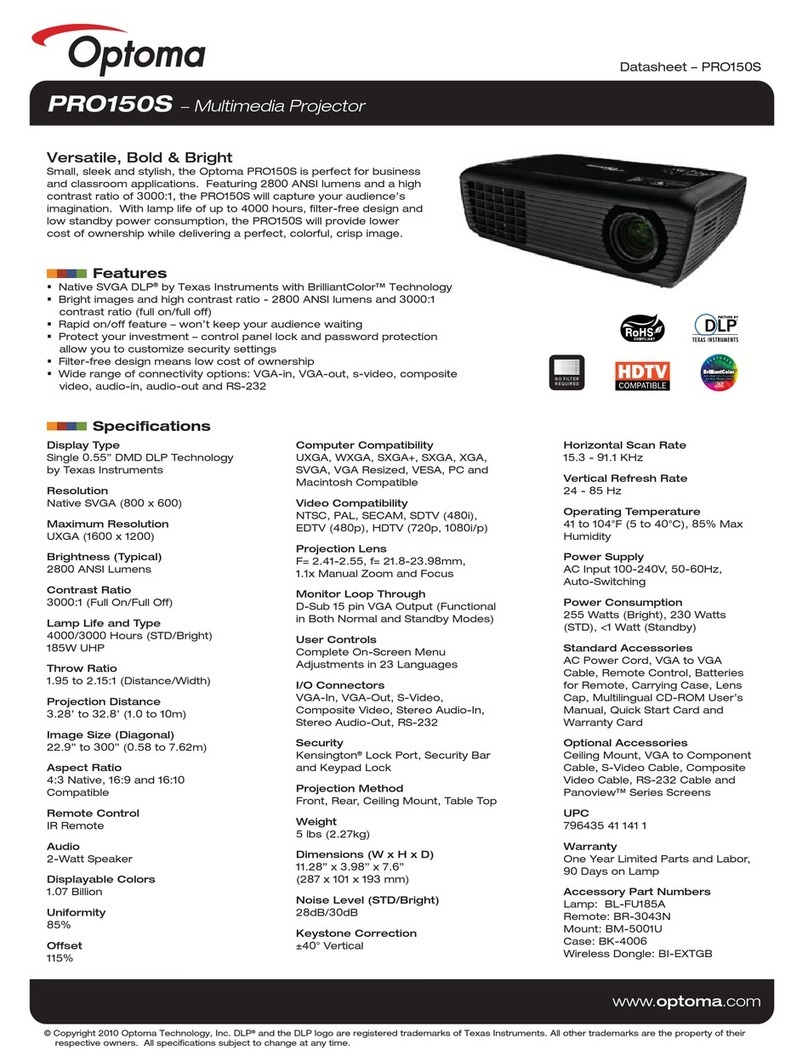
Important Information
4
WARNING
Lamp power supply setup
conditions
• The location where you setup the lamp
power supply should have plenty of space
in front of the air inlet and air outlet to
prevent the inside of that unit from
becoming excessively hot. Ensure that air
can flow inside the unit to allow the inside
to be cooled. As a guide, there should be
at least 20 cm of free space in front of the
air inlet and at least 50 cm in front of the
air outlet.
• Particularly, if storing the lamp power
supply in a rack or case, see the section
about “Lamp power supply installation
conditions” to ensure that there is plenty
of opening area on the portions facing the
lamp power supply air inlet and air outlet.
Also, a duct structure should be
configured to lead to the air outlet on the
rack or case so that the exhaust air from
the lamp power supply can be discharged.
This is to ensure that the air circulates
outside the rack or case.
Always connect to a ground
prior to
connecting to the AC power supply.
• A very high, leaked current will flow to the
projector and lamp power supply frame.
Therefore, always connect to a ground
prior to connecting to the AC power
supply.
Connecting the lamp power supply
and AC power supply
• AC power from the building’s AC power
facility supplied to the lamp power should
be connected via a breaker.
Refer to “2.3 Connecting the Power Cable”
for details.
• The cable connecting the building’s AC
power facility and lamp power supply
should have a core wire thicker than
8AWG and the core wire material should
be copper.
• Use UL- and CSA-certified terminals to
connect the lamp power supply to the AC
power source. Mount a terminal properly
as described in this manual.
Connect the projector to exhaust
equipment.
• Use a duct, etc., to connect the projector’s
air outlet to exhaust equipment that can
handle flow amounts of at least 16 m3/min.
Refer to 2.8 “Mounting the Exhaust
Equipment” in this manual to mount it
correctly.
Backing up authentication data
• In order to backup the authentication data
needed to receive cinema video signals, a
secondary battery is used inside the
projector. If you have not used the
projector at all for 6 months or more, the
battery will lose power and the
authentication data will not be able to be
backed up. Always put the projector into
standby mode for at least 48 hours once
every 6 months to recharge the battery.
Installation
• Consult your dealer for information about
transporting and installing the projector.
Do not attempt to transport and install the
projector yourself.
The projector must be installed by
qualified technicians in order to ensure
proper operation and reduce the risk of
bodily injury.
• Continual place the projector on a flat,
level surface in a dry area away from dust
and moisture. Tilting the front of the
projector up or down could reduce lamp
life. Do not put the projector on its side
when the lamp is on. Doing so may cause
damage to the projector.
• Do not place the projector in direct
sunlight, near heaters or heat radiating
appliances.
• Exposure to direct sunlight, smoke or
steam could harm internal components.
• Handle your projector carefully. Dropping
or jarring your projector could damage
internal components.
• To carry the projector, a minimum of five
persons are required.
Remove the lens and the lamp before
carrying the projector. Do not apply a
strong shock to the projector. Do not hold
the lens part and the anamorphic lens part
(or the wide converter lens part) with your
hand. Otherwise the projector may
tumble or drop, causing personal injury.
• Do not place heavy objects on top of the
projector.
• Shut down AC power to the projector and
the lamp power supply, and disconnect
the power cable before moving the
projector.
